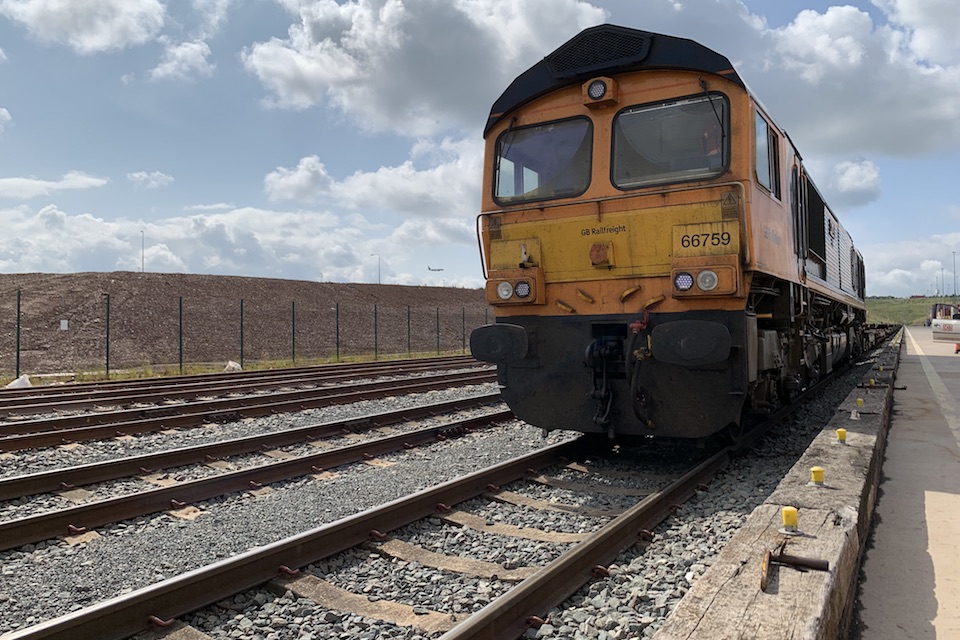It is probably the longest-running dispute over rail development in the UK. It certainly ranks among the most acrimonious. However, time may have been called on forty years of fighting over the future of a former airfield. A legal ruling has thrown out objections from a long-standing campaign group.
A High Court judge has rejected a plea for a judicial review over plans to build a rail freight terminal on the site of a former military airfield in Hertfordshire, about twenty-five miles (forty kilometres) north of Central London. It could be the buffer stop for the vigorous opposition to the planned Strategic Rail Freight Interchange (SRFI).
Designated Strategic Rail Freight Interchange
Campaigners have heard a High Court judge dismiss their application for a judicial review into the sale of Radlett Aerodrome. The issue predates the rail freight terminal plans. Campaigners say that a law dating back to before the Second World War precludes the local council from selling the land. Campaign group “Save St Albans: Fight the Freight” argue that the sale of the land was ‘unlawful’ under the Metropolitan Green Belt Act of 1938.
The former airfield was effectively gifted to the local council around 1984 for a nominal fee of one pound (€1.17).

The land, say the campaigners, was to have been maintained as an open space in perpetuity. However, Hertfordshire County Council has since sold its share of the 1000-acre (400-hectare) site. Logistics developers SEGRO purchased the land with proposals for what has subsequently been designated a Strategic Rail Freight Interchange (SRFI) by the UK central government in London. That designation carries some weight insofar as it supersedes some of the complicated planning permissions needed for any UK development. The purchase price is understood to have been £34million (€40million).
Crammed in between population centres
“We are not against rail freight,” says Nuala Webb, a local politician and campaigner for Fight the Freight. “If it really was rail freight, and if it wasn’t being built right up against two densely populated areas, then we would be in favour of it.” Nuala Webb told a local radio station that the issue was not about the logistics park itself but rather the initial sale of the land to the local administration, Hertfordshire County Council.

She claims that the sale came with a caveat that the land be maintained as open space in perpetuity. There is a local expectation that the local council would honour their obligations in that respect. The area is subject to significant population and development growth, and few would argue that the amenity land will be missed. Ms Webb also noted that the site is “crammed in between two densely populated villages” and that rail access is restricted by a tunnel which is below gauge to accept intermodal traffic.
Signals have certainly moved
The rail issue was not challenged in the interview but congestion on the Midland Main Line, which runs adjacent to the site, has been identified as an issue. A historic Network Rail report noted that the line already carries significant volumes of aggregate traffic. Intermodal consists are generally confined to the West Coast Main Line, which would be difficult to reach without extensive additional infrastructure.
Campaigners are understood to be considering an appeal. They have told local media that they believed they had grounds to appeal the judge’s decision but had to be mindful of the potential costs of further court action. A petition seeking to stop the development has gathered almost ten thousand signatures.
The parliamentary constituency is held by the centralist Liberal-Democrats. Their candidate at next month’s general election, Daisy Cooper – who was the sitting member of parliament – has already said she will oppose the development. It may not quite be a great light on the development just yet – but the signals have certainly moved to ‘proceed with caution’.